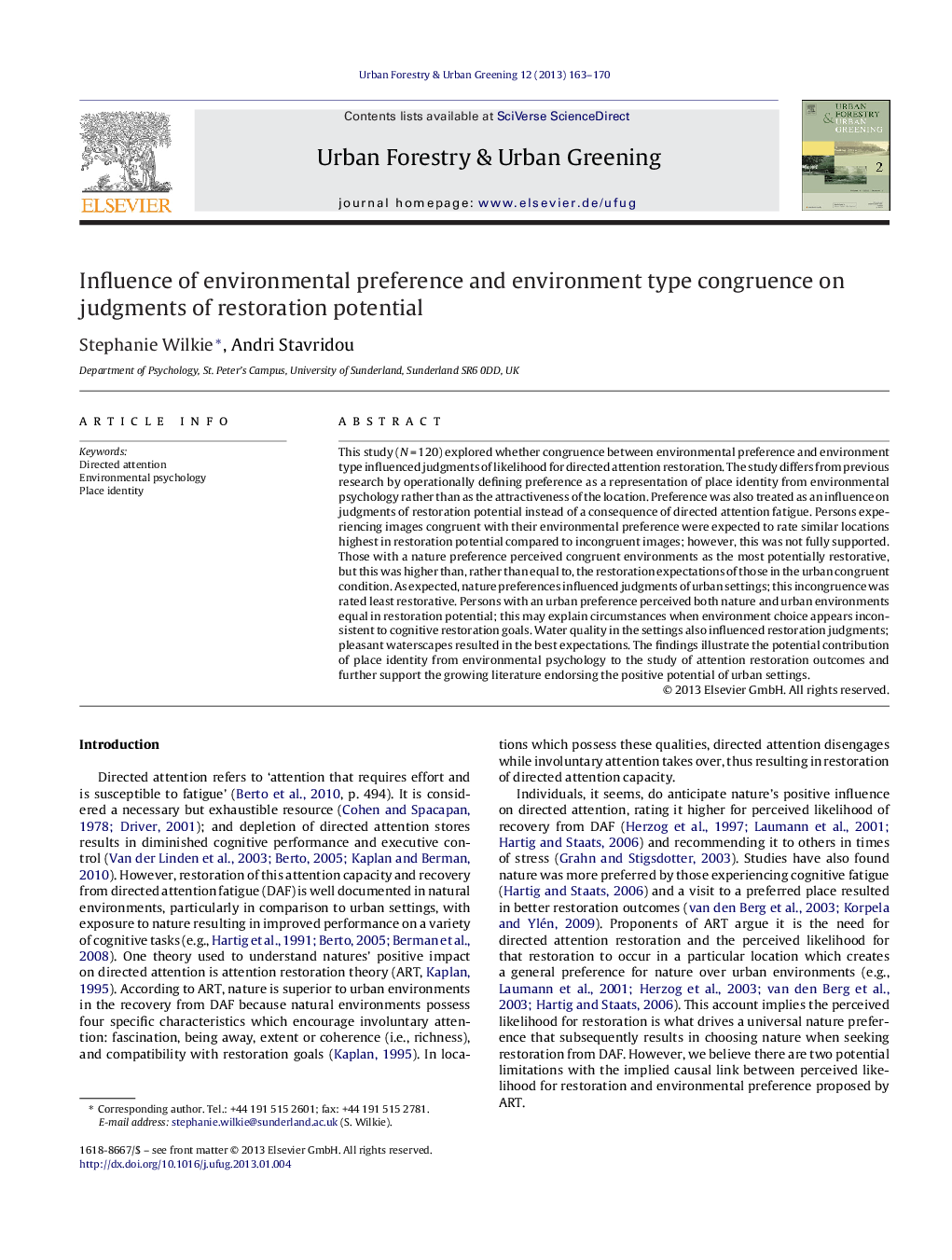| Article ID | Journal | Published Year | Pages | File Type |
|---|---|---|---|---|
| 94123 | Urban Forestry & Urban Greening | 2013 | 8 Pages |
This study (N = 120) explored whether congruence between environmental preference and environment type influenced judgments of likelihood for directed attention restoration. The study differs from previous research by operationally defining preference as a representation of place identity from environmental psychology rather than as the attractiveness of the location. Preference was also treated as an influence on judgments of restoration potential instead of a consequence of directed attention fatigue. Persons experiencing images congruent with their environmental preference were expected to rate similar locations highest in restoration potential compared to incongruent images; however, this was not fully supported. Those with a nature preference perceived congruent environments as the most potentially restorative, but this was higher than, rather than equal to, the restoration expectations of those in the urban congruent condition. As expected, nature preferences influenced judgments of urban settings; this incongruence was rated least restorative. Persons with an urban preference perceived both nature and urban environments equal in restoration potential; this may explain circumstances when environment choice appears inconsistent to cognitive restoration goals. Water quality in the settings also influenced restoration judgments; pleasant waterscapes resulted in the best expectations. The findings illustrate the potential contribution of place identity from environmental psychology to the study of attention restoration outcomes and further support the growing literature endorsing the positive potential of urban settings.
